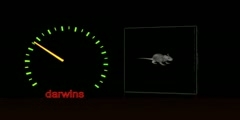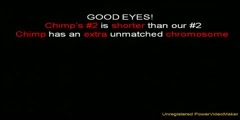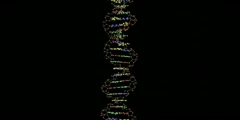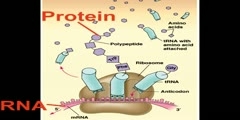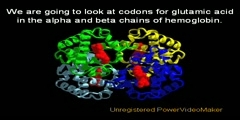What Can Embryos Tell Us About Evolution?
Facts Of Evolution (Part 6): What Human Embryos Reveal About Evolution. --- Please subscribe to Science & Reason: • http://www.youtube.com/Best0fScience • http://www.youtube.com/ScienceMagazine • http://www.youtube.com/FFreeThinker --- EVOLUTION IS REAL SCIENCE: 1. Does The Evidence Support Evolution? http://www.youtube.com/watch?v=p1R8w_QEvEU 2. Vitamin C And Common Ancestry http://www.youtube.com/watch?v=SF2N2lbb3dk 3. Are We Descended From Viruses? http://www.youtube.com/watch?v=nIsWZCSMSSs 4. Does The Fossil Record Support Evolution? http://www.youtube.com/watch?v=QWVoXZPOCGk 5. Where Are The Transitional Forms? http://www.youtube.com/watch?v=kfTbrHg8KGQ FACTS OF EVOLUTION: 1. Introduction http://www.youtube.com/watch?v=43SskX-pEqA 2. Universal Common Descent http://www.youtube.com/watch?v=G0UGpcea8Zg 3. Good Design, Bad Design http://www.youtube.com/watch?v=1Mtr3Cum74A 4. Speciation And Extinction http://www.youtube.com/watch?v=T5kumHLiK4A 5. How Fast Is Evolution? http://www.youtube.com/watch?v=6XgeSi1EGkU --- Embryo drawing refers to any representation of the illustration of embryos in their developmental sequence. In plants and animals, an embryo develops from a zygote, the single cell that results when an egg and sperm fuse during fertilization. In animals, the zygote divides repeatedly to form a ball of cells, which then forms a set of tissue layers that migrate and fold to form an early embryo. Images of embryos provide a means of comparing embryos of different ages, and species. To this day, embryo drawings are made in biology undergraduate developmental biology lessons. Comparing different embryonic stages of different animals is a tool that can be used to infer relationships between species, and thus biological evolution. This has been a source of quite some controversy, both now as in the past. A biologist who pioneered in this field was Ernst Haeckel. By comparing different embryonic stages of different vertebrate species, he formulated the Recapitulation theory. This theory states that an animal's embryonic development follows the exact same sequence as the sequence of its evolutionary ancestors. Haeckel's work and the ensuing controversy linked the fields of developmental biology and comparative anatomy into comparative embryology. From a more modern perspective, Haeckel's drawings were the beginnings of the field of evolutionary developmental biology (evo-devo). The study of comparative embryology aims to prove or disprove that vertebrate embryos of different classes (e.g. mammals vs. fish) follow a similar developmental path due to their common ancestry. Such developing vertebrates have similar genes, which determine the basic body plan. However, further development allows for the distinguishing of distinct characteristics as adults. • http://en.wikipedia.org/wiki/Embryo_drawing .
Channels: Others
Tags: evolution natural selection facts evidence human embryos drawing development plants zygotes cells animals ernst haeckel recapitulation anatomy comparative embryology charles darwin biology common decent ancestry fossils transitional forms science evolutionary theories
Uploaded by: second ( Send Message ) on 08-04-2010.
Duration: 3m 44s
